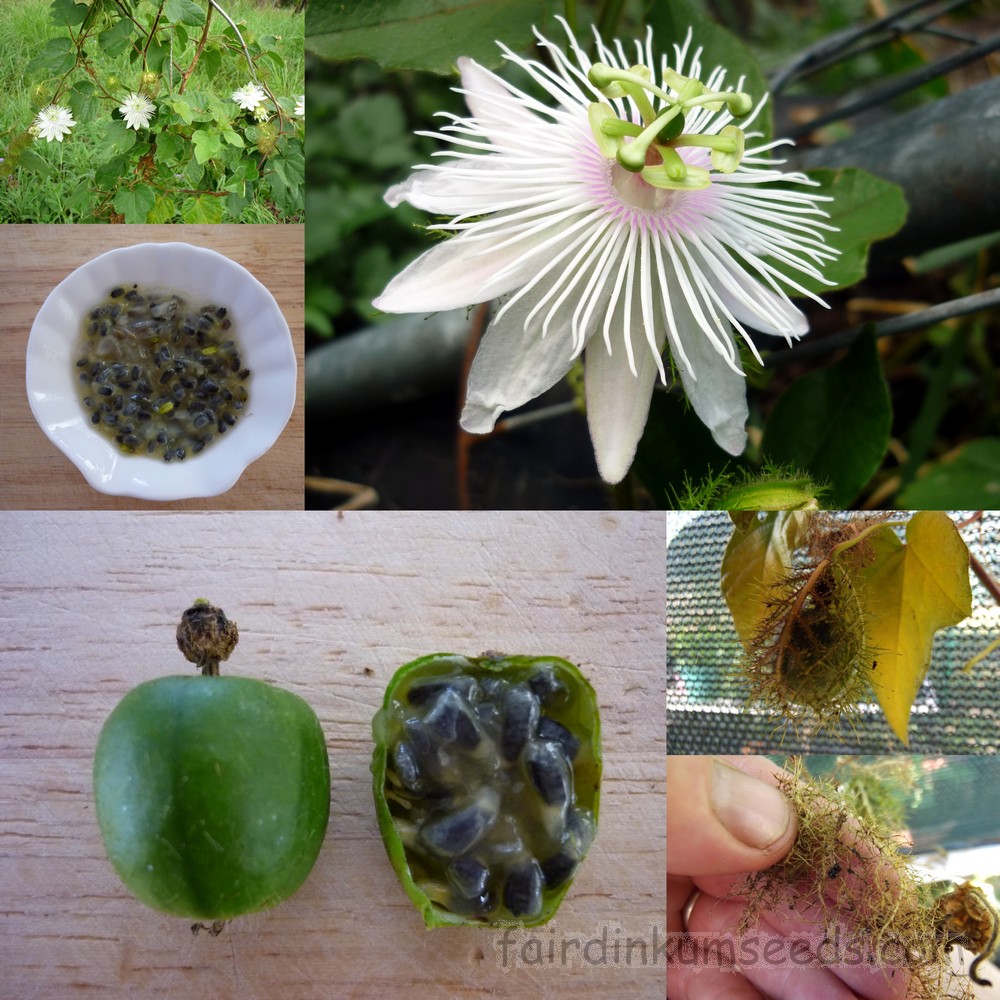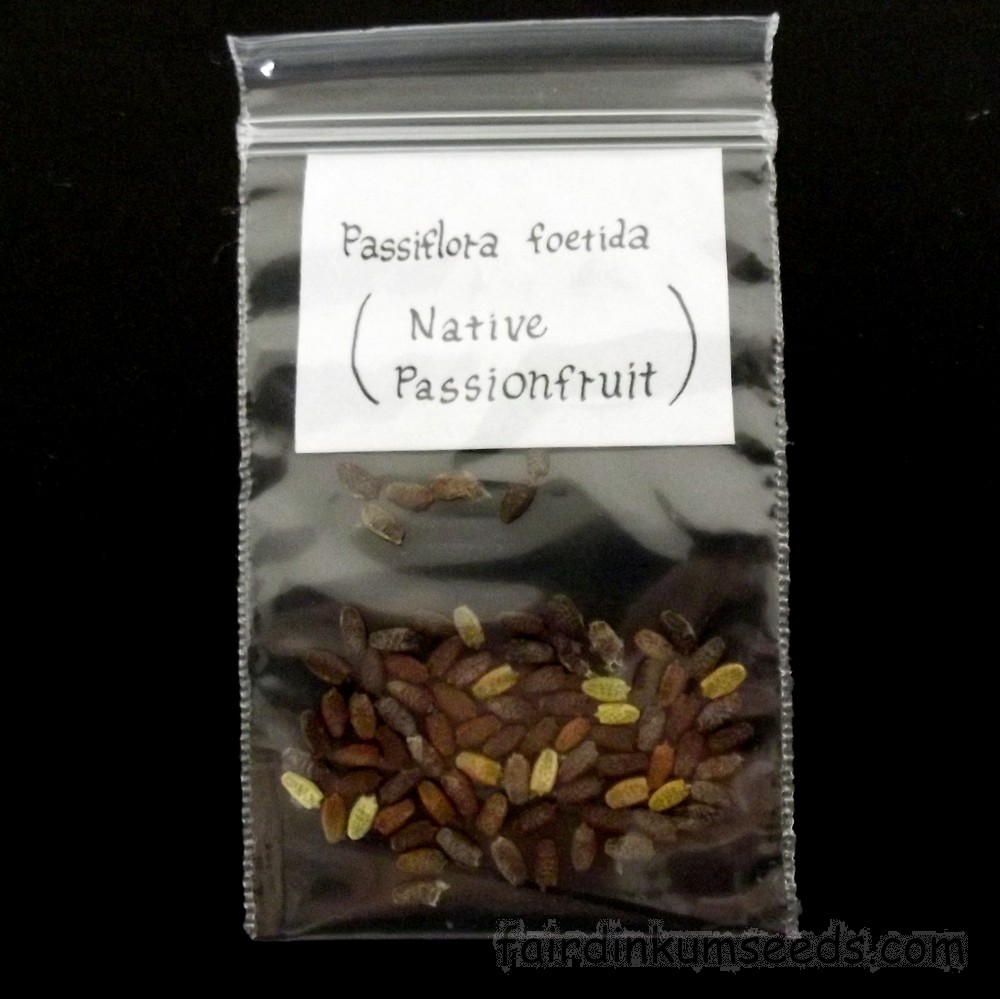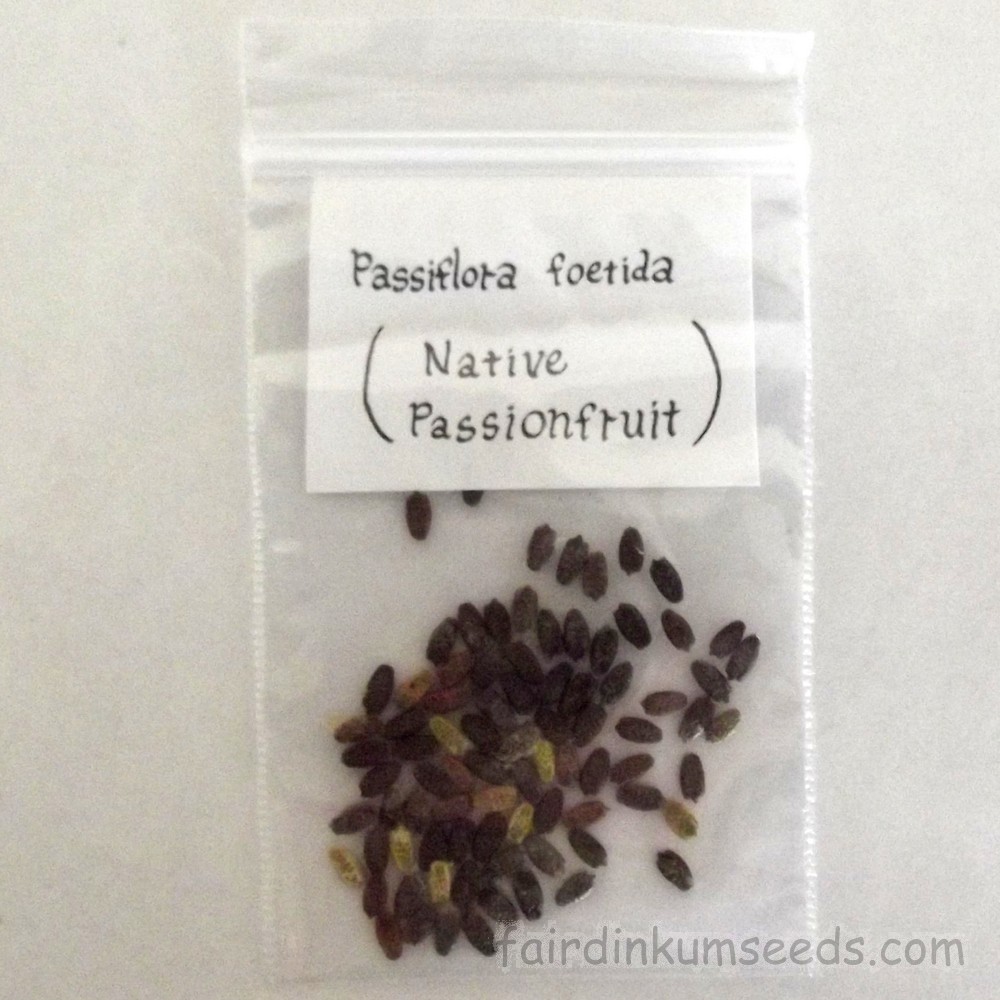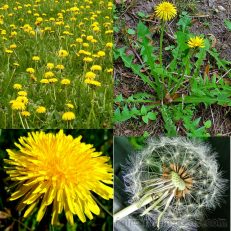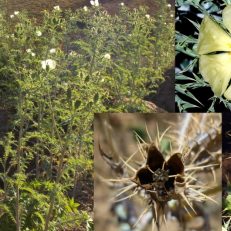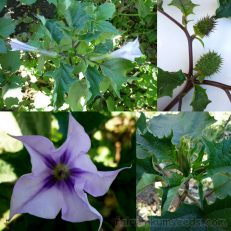Please read text!
Carnivorous Passionfruit Passiflora Foetida Seeds
At least 20+ fresh seeds from this cool tiny little Passionfruit!
It’s a native to the USA, Mexico, Central America including Belize, Costa Rica, El Salvador, Guatemala, Honduras, Nicaragua and Panama, the Caribbean and South America countries of French Guiana, Guyana, Surinam, Venezuela, Brazil, Bolivia, Colombia, Ecuador, Peru, Argentina, Chile, Paraguay and Uruguay.
Not actually a native plant to Australia, but often called “native passionfruit” nonetheless, especially folks that traditionally harvest and it back in their home countries.
Often called “stinking passionfruit” by Aussies and although it doesn’t stink, it has a musky aroma unlike other more well known Passiflora Species.
It has been naturalized and is harvested as a medicinal in Europe as one of the most popular ingredients in “herbal sleep aids/pills/powders”, is a traditional treatment of sleeplessness in Vietnam, and is grown commercially on a small scale, as a food crop in the Cocos Islands, many parts of SE Asia including the Philippines, Singapore, Thailand, Vietnam, Malaysia, Brunei, Indonesia and Papua New Guinea the Mascarenes most Pacific islands including American Samoa, Western Samoa, Cook Islands, Marshall Islands, Fiji, French Polynesia, Guam, Kiribati, Nauru, New Caledonia, Niue, Palau, Tonga and Hawaii, etc etc etc……….
This plant is relatively unused by Western societies. As such, there is little info online in English, but if you were to search in Thai, Filipino, Indonesian or French, etc there is page after page, as it’s a really cool plant!
It is a carnivorous plant in my opinion, as it uses sticky bracts to trap small insects and has digestive juices to dissolve prey. Some folk say its Proto-Carnivorous, which means it is still in evolution, but well on the way there. There is still a lot of debate on who is correct, but naturally I reckon it’s me!
Regardless, whatever it is, it tastes bloody great!
This is the Green fruited smaller/dwarf form, NOT the more strongly scented larger orange/yellow fruited one that’s in most of the online data, and this one grows a much smaller vine and more fruit per meter that the other more tropical form.
I also have a couple red fruited Passiflora foetida too if you are interested..I grow it near the compost bin, and wherever I get gaps or plants die in the irrigated rows.
A lot of folk just grow it in a large pot and let it ramble around on the porch, balcony, windowsill, etc.
It’s nowhere near as big as the traditional passionfruit vines, and I did that for years in the city!
It’s non-acidic and has sweet white/cream coloured flesh, with a funky almost “Muskstick candy” flavour?
Definitely not the standard passionfruit. But after showing and taste testing on heaps of people over the years, I have never had anyone say they didn’t like it.
Great in pots on the balcony for city folk, but if you live in the bush like us, be aware.
The critters here love them!
The bats, king parrots, custard head parrots, bettongs, our even our bloody dog, they all love the fruit and if given half a chance, and the kangaroos and wallabies will mow the whole plant off at ground level, eating the plant fruit stem and all.
The whole plant is edible in sensible amounts, and its used as a herbal remedy in many cultures for a wide range of ailments.
The leaves brewed as tea have a sedative effect, much like chamomile, but much stronger in effect with me…..
Here is a small bit of data that you may find interesting, from a well-respected USA based cancer website.
“Herb matter derived from the aerial parts of the plant “Passiflora Foetida”. Patients use this herb to treat insomnia, anxiety, epilepsy, neuralgia, and withdrawal syndromes from opiates or benzodiazepines.
The active component of passionflower is unknown.
The alkaloid components (e.g. harman, harmaline) are thought to produce monoamine oxidase inhibition, while the maltol and gamma-pyrone derivatives cause activation of GABA receptors (4). Reported adverse events include sedation, dizziness, impaired cognitive function, and one case report of nausea, vomiting, and ECG changes.
All adverse events subside following discontinuation of passionflower (7) (8). Theoretically, passionflower may potentiate the sedative effect of centrally acting substances (e.g. benzodiazepines, barbiturates, alcohol) (10).
A small pilot study evaluated passionflower for generalized anxiety and showed comparable efficacy to oxazepam (8), but a systematic review concluded that randomized controlled studies are needed to confirm such effects (12). Passionflower may be of use in combination with clonidine for opiate detoxification, but additional research is required.
No standardization exists for passionflower extract. Therefore dosages and activities may vary.”
Food for thought.
Also, as the fruit ripen from the base of the plant up, you get a fruit ripen up every few days.
They store fine on the plant for about three weeks (if the critters don’t get at them first!) so you can eat a couple every day as I do, or wait until you have a few and chill them down as an interesting desert or garnish.
Grown by us organically, no nasties, no chems, no problems!!!
